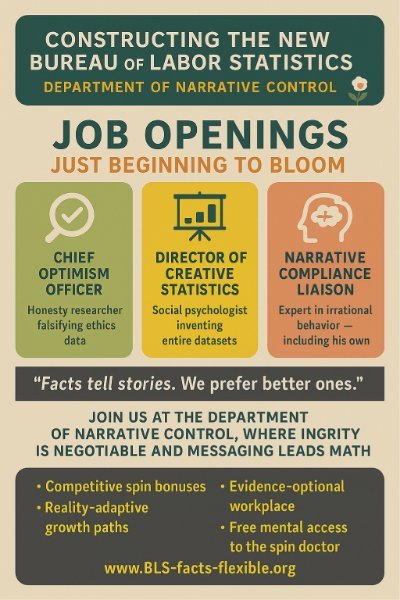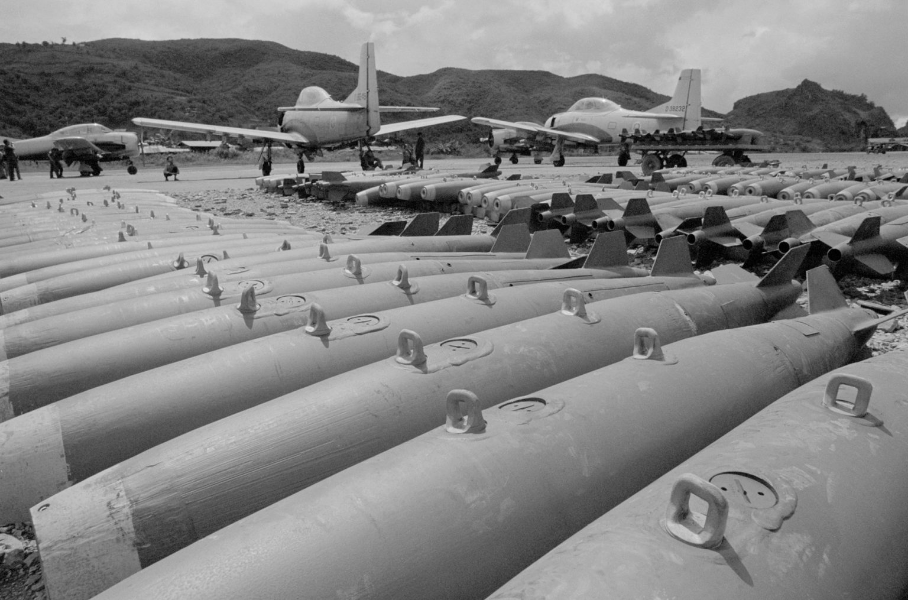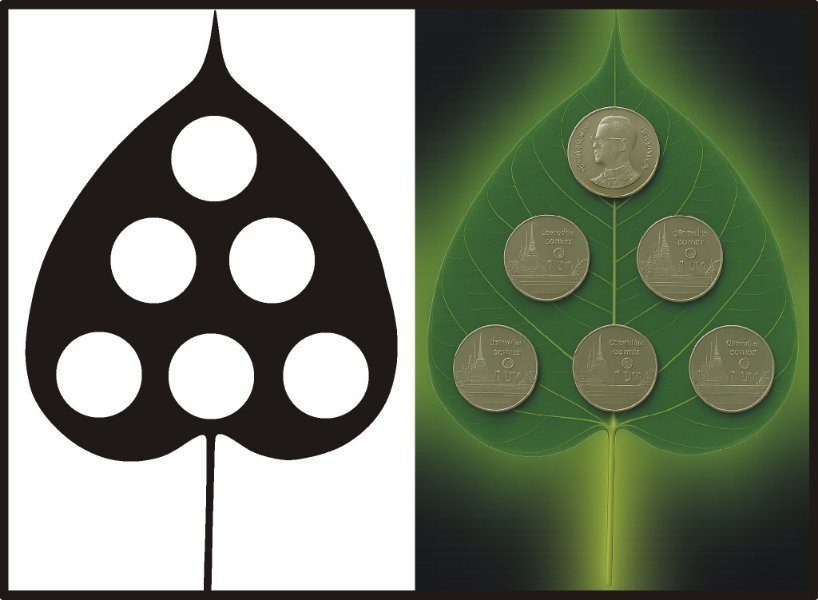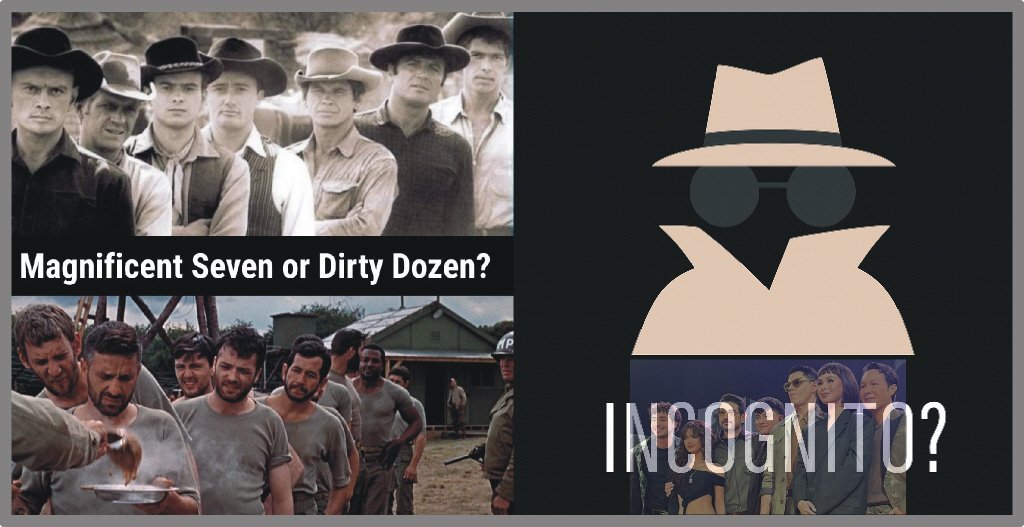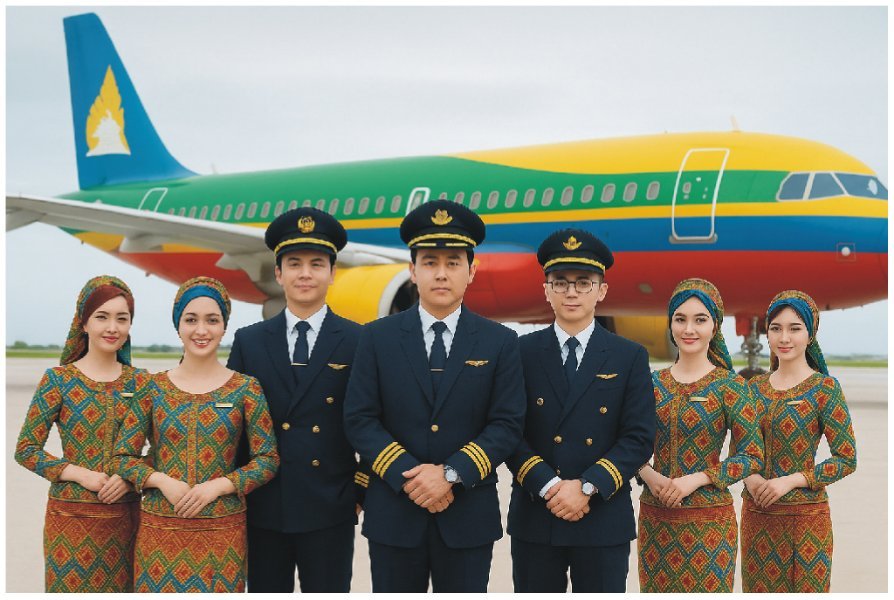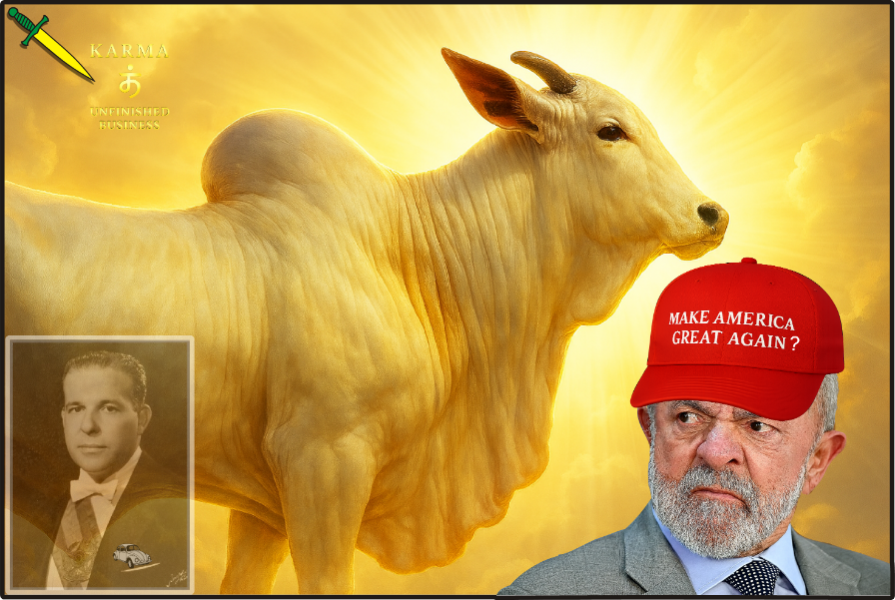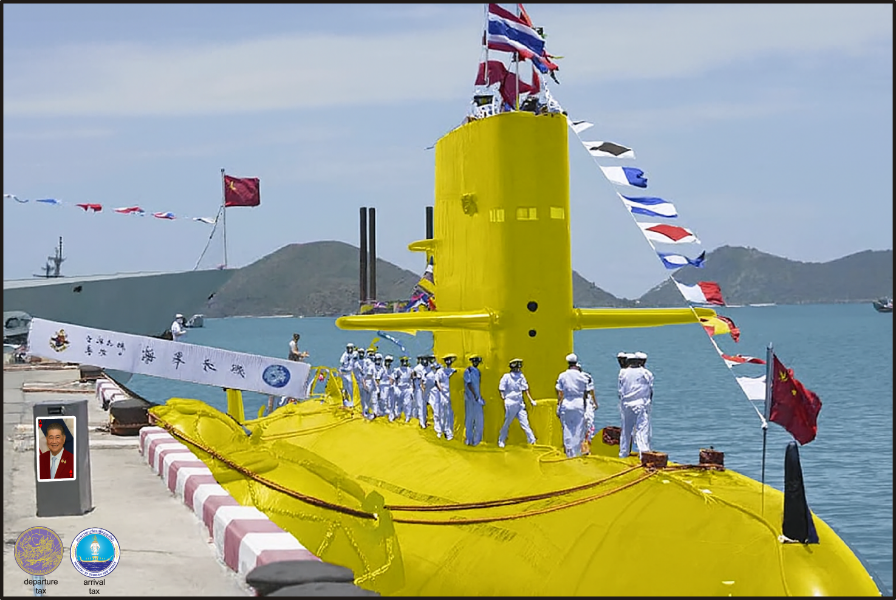-
Posts
520 -
Joined
-
Last visited
Recent Profile Visitors
6,740 profile views
jacnl2000's Achievements
-

Report British Expat’s Roast Hunt in Thailand Goes Viral
jacnl2000 replied to webfact's topic in Thailand News
🍽️ Beans on Toast — with Ant Defense Engineering This may just look like a humble plate of beans on toast, but the real star here? The white plate. Large, flat, and bright enough that even the stealthiest ant can't mount a surprise attack. Picked mine up at Global Home — because in this climate, defending your breakfast is just as important as making it. After all, nothing ruins a British breakfast quite like an ambush from the insect kingdom. -
This ongoing discussion — the thread — has slowly unspooled something far more troubling beneath its surface: the threat of institutional storytelling overtaking factual integrity. What follows is a satirical recruitment poster, featuring three fictional roles that each point — unmistakably — to public figures known for serious research misconduct. Under current U.S. parody law, I cannot show their faces — and frankly, I don’t need to. Their reputations speak loudly enough.
-
“Papaah doesn’t know everything,” my boys say. Don’t worry — I got used to it. For the family’s sake, I stopped the bickering. They’re right — and here, that might be a blessing. In Lao, they say: things you don’t see are still there. The ground still remembers. Not being an expert is sometimes the very best position to hold. Especially when the earth hides what the sky once dropped. The aftermath of ordnance is part of the ordnance too. In my own professional jargon — in official sign language — it’s called dropshadow. Its purpose? To embed the object into the scene. To stop untold secrets from floating. What is hidden must still be held in place. Just like memory. Just like aftermath. Just like Laos. UXO in Laos — the aftermath: 🎥 https://youtu.be/TZQdmQM_oAw
-
First of all, thank you for sharing your photo — I genuinely appreciate it. If the bomb in your picture really measures about 7 boot-lengths, and those boots were a common size — let’s say EU 44–45 — then the bomb’s length lines up very closely with the M117’s actual length of 206 cm. In that case, I completely agree: Your photo very likely shows an M117 bomb. So yes — we’re totally on the same page when it comes to your statement: “Here is a pic of an M117 bomb that I disposed of in Laos a few years ago.” What’s harder to reconcile is the first statement you made: “I can tell you from personal experience that that bomb IS NOT an M117 750 lb Bomb.” That shifts the conversation from handling ordnance in the field — something I absolutely respect — to interpreting a bomb from a photo, which is a different kind of expertise. Working with bombs directly and identifying them in images are two different challenges. Take the photo from the article, for example. The bomb in that image looks about the length of a person — nowhere near 2 meters. But that’s probably due to lens distortion, especially foreshortening or perspective compression. These effects can really change how large or small an object looks in a photo. So I totally understand your reaction — especially if you’ve worked directly with these weapons. But in this case, I think the issue isn’t about bomb disposal knowledge. It’s more about how easily our eyes can be tricked by the camera, especially when we don’t have a clear reference for scale. Now, let’s look at the great photo above — it’s a perfect example of foreshortening in action. Here’s what’s in the image: Foreground: A row of M117 bombs, recognizable by their: Long cylindrical bodies Single lifting lugs on top Rounded noses and square tail fins Background: T-28 Trojan aircraft, commonly used during the Vietnam War What makes this image fascinating is how the same type of bomb can appear both too short and too long, depending on where it is in the frame: The bombs closest to the camera look big, thick, and dominant — but to some, they may seem shorter than they really are because of the angle and lens distortion. The bombs farther away start to look more accurate in shape — longer and sleeker. The perspective stretches the row, making the whole scene feel deeper and larger than it is. This is the paradox of foreshortening: It can make objects look compressed up close and stretched out in the distance — all in the same photo. That’s why identifying bombs from photos is so tricky. Even experienced EOD professionals can misjudge what they’re seeing if there’s no clear size reference — like a boot, a person, or a measuring stick. In your original photo, the M117s look shorter than they really are — maybe around 1.5 meters — but we know from technical specs that they’re actually 2.06 meters long. So again, thank you for sharing your image. It’s a great example of how easily photos can distort reality — and why context, perspective, and reference points matter so much.
-
The bomb in the photo cannot be a Mk 84 due to its significantly shorter length. All available visual, historical, and technical evidence strongly supports that it is a U.S. M117 (750-lb general-purpose bomb) — a common Vietnam-era munition used extensively in Cambodia. The bomb is clearly shorter than the CMAC deminer is tall (and likely no longer than ~2 meters, based on body proportions and the visible measuring tape). This is nowhere near the 3.84-meter length of the Mk 84, conclusively ruling it out. It is simply far too short. Most likely, this is an M117: an older GP dumb bomb design — not a 2,000 lb (940 kg) weapon like the Mk 84, but a 750 lb (340 kg) bomb that better matches both the physical dimensions and the historical context of the region. Better to blow up the scale than the bomb.
-
The usual tension between canon — narrative authority — and cannon — corrective force — doesn’t just play out on land, and not for foot soldiers only. Who knows — maybe parliament will finally hurry up with that currently stalled submarine. Symbolically, today is a perfect day to start. Although — comparing the timestamps of posts, something weird may just have happened here.
-

UK Security Tight as Trump Visits Scotland for Golf Resorts and Starmer Meeting
jacnl2000 replied to webfact's topic in World News
In the 17th century, Donald Trump’s ancestral clan—the MacLeods of Lewis—lost control of the Isle of Lewis due to internal conflict and Crown-sanctioned land seizure by Clan Mackenzie—a process that would today be recognized as aggressive land encroachment, or simply, land grabbing. Anyone who owns a piece of land knows how these things usually go: not well, and certainly not fairly. In modern Scotland, progressive land reform laws protect communities by enabling collective ownership of land. On an island as large and socially intricate as Lewis, where major estates are already held by community trusts, it’s nearly impossible for any individual—regardless of ancestral claim—to purchase such land outright. Therefore, the golf course on Lewis will never be put up for private sale. Turnberry, by contrast, is an entirely different story—a privatized, historically Bruce-owned site, acquired through a commercial deal. What? Trump still wants to buy Greenland, you say? Unbelievable—but then again, real geopolitical absurdity often is. Above: A tongue-in-cheek professional attempt (I did my best—but it will never be good enough; bringing Donald closer to his maternal home) to reimagine the MacLeod of Lewis crest, replacing the traditional radiant sun with the face of Donald Trump. The belt-and-buckle format and the early Scots motto “I birn quhil I se” (“I burn while I see”) remain true to heraldic tradition. While clearly satirical, the emblem captures the tension between ancestral symbolism and modern ambition—land, legacy, and legacy-branding colliding in one surreal image. -

Report Tensions with Cambodia Impact Thai Baht and Tourism
jacnl2000 replied to snoop1130's topic in Thailand News
The intent here is not to signal an impending economic upswing, but to stabilize perception and safeguard institutional credibility amid ongoing uncertainty. Since its founding in 1907, the bank has leaned on deeply rooted symbols to project trust and continuity. The original black-and-white emblem—featuring a leaf and six coins—was a calculated design choice, blending organic growth with monetary solidity. Coming from a country where coins might just as easily evoke the wheels of early bicycles ridden by our first captains of industry, I see in that symbol both motion and intent—progress forged from modest beginnings: Today’s visual identity, sleek and contemporary, retains that foundational spirit. It signals resilience, reliability, and cultural alignment. For financial analysts, it reflects a branding strategy carefully designed to mitigate reputational risk. For investors, it communicates a deliberate effort to uphold stakeholder confidence through coherent symbolic storytelling. For tourists, it provides visual clarity and emotional reassurance—reinforcing the perception of the Thai Baht as stable and accessible, presented fluently in three languages. Yet after observing Thailand’s economic and social evolution for over four decades, I can say with conviction: the image portrayed here—though effective—is incomplete. Economic sentiment, particularly in periods of volatility, is shaped by structural dynamics far deeper than surface-level visuals can reveal. Symbols may project confidence, but without the backing of fundamentals, they risk becoming little more than aesthetic veneers. In this case, the crafted image is not deceptive—but it is selective. It builds a narrative of stability and continuity atop a far more intricate and uneven reality. It’s akin to living in a house with thick carpets—warm, comforting, and polished on the surface, yet quietly collecting dust beneath. The shine is genuine—but so too are the cracks it conceals, if one reads between the lines. -

What Movies or TV shows are you watching (2025)
jacnl2000 replied to Rimmer's topic in Entertainment
Someone (not me) might prefer Incognito over The Dirty Dozen or The Magnificent Seven because it delivers a modern, Filipino twist on the “team of outcasts” formula — tackling crime, corruption, and covert justice with local relevance and moral ambiguity. Rather than war-torn Europe or frontier towns, Incognito unfolds in present-day Philippine society, led by a private contractor navigating the murky space between state-sanctioned justice and freelance intervention. The setup has promise. The series assembles its characters — disgraced operatives, fallen soldiers, loose cannons — into a high-stakes unit that operates in the shadows. There's a kind of reverse-heroism at play, one that gestures toward redemption, grit, and loyalty. On paper, it echoes the dynamics of elite ensemble films, but on screen, that resonance often dissolves into confusion. One of the core issues is the character of the Contractor himself. Supposedly an experienced leader and strategist, he behaves in ways that no seasoned operations manager would realistically emulate. His decisions fluctuate between theatrically impulsive and bafflingly naïve. For a man entrusted with tactical missions against organized crime, he often acts more like a motivational speaker who wandered onto the wrong set. And then there’s the dialogue. In relation to producing movies, no show like Incognito in my memory has deployed the word “team” with such unrelenting enthusiasm — to the point of near-parody. It’s as if the script treats team not merely as a theme, but as a mantra — repeated so obsessively that it begins to lose all meaning and instead draws attention to its own overuse. The repetition isn't just noticeable; it's disruptive. What should build unity starts to feel like branding, as if the viewer needs constant reminding that these characters are, indeed, in a team — whether their actions support that idea or not. Beyond narrative structure, watching Incognito requires serious perseverance — not because the story drags, but because of the show’s hidden business model and the sheer time investment it demands. Commercial interruptions, inconsistent pacing, and immersion-breaking transitions are not just external annoyances. They bleed into the show’s rhythm, distorting scenes and displacing emotional momentum. This isn’t a slow burn; it’s an obstructed march, littered with pop-up detours. To be fair, Incognito is ambitious. It wants to localize the covert-ops genre, to reflect Filipino realities through a lens of action and accountability. At times, it even gets close. But ambition alone can’t salvage what feels increasingly like a frustrating viewing experience — one that gestures at depth but is often undone by its own mechanics and repetition. In the end, the show may find its audience — particularly those who are willing to overlook structural hiccups in favor of thematic resonance or national relevance. But for many, Incognito may ultimately feel less like a mission... and more like a test of endurance. -

Report Air Cambodia Denies Copying Thai Airways Amid Branding Backlash
jacnl2000 replied to webfact's topic in Thailand News
No copycatting—just mutually shared legacy colors. When it comes to broad cultural colors—like gold, purple, or red, used by national airlines drawing from shared heritage—these are not exclusive, and can’t be owned or patented by any one party. These colors are woven into the region’s history, echoing across traditions, crafts, and national symbols. What I happen to have is AI and a true Khmer color palette, so a quick generative redesign is always possible—just take a close look at the faces involved. But it doesn’t give me the right feel. The technology is powerful, but there’s a depth to authenticity and identity that goes beyond simply arranging the “correct” colors or features. Legacy, memory, and genuine connection aren’t so easily generated. All these ladies have very similar faces... -

Why is the Pizza Company not "real pizza"?
jacnl2000 replied to RamenRaven's topic in Western Food in Thailand
Right. Birth. Allow me to try to explain something. No two people are alike. I’m not a pizza lover, but I’ve started loving the Thai kebab from our local Thai market. After ten pieces, you get one for free. No, it’s not a punch card—it looks more like pink lottery tickets to me. It’s more than a loyalty program; it’s an invitation to become part of the community, to come back, to belong. It’s full experience management, Thai-style. Food is a vehicle for connection, for belonging, for those “full experience” moments that linger long after the meal is gone. This is very different from my popular Turkish friend, who owns a few food trucks in the south of The Netherlands and still makes his own bread. It’s kind of beautiful, isn’t it? Food travels, gets re-mixed, and ends up reflecting the place and the people making it. I like the Turkish version better because it’s delivered with small talk—a little small talk always makes my meals taste better! No matter how hard you try, you can’t deny the proven success of Pizza Company. Still, I miss those little moments that made my friend’s Turkish kebab so memorable. So here I am, trying to find and enjoy my other moments. -

USA Lula Slams Trump’s Tariff Threat: "He's Not Emperor of the World"
jacnl2000 replied to webfact's topic in World News
-

Tourism Thailand Delays Tourist Entry Fee Amid Travel Concerns
jacnl2000 replied to snoop1130's topic in Thailand News
-
And what do we have here? A possibly-as-usual leap from big fruit (Hua Hin) to big pork (Chiang Mai)? That’s exactly the kind of bold move agribusiness folks love — switching from sweet mango groves down south to large-scale pig farming up north. Growing, diversifying, and spreading the risks. Of course, it’s under investigation now, so both stories are still unfolding. But when the names truly link, it’s classic entrepreneurial hustle by people who haven’t seen enough money yet — ambitious, diverse, and a bit messy. As the old Dutch proverb says: “’n boer en unne zog hebben nooit genog.” 🐷🍋
-
Hide it. Shrink it. Charge more. Shop small, shop smart.





.thumb.png.59631667ecf82c97db947523760c9cdd.png)











